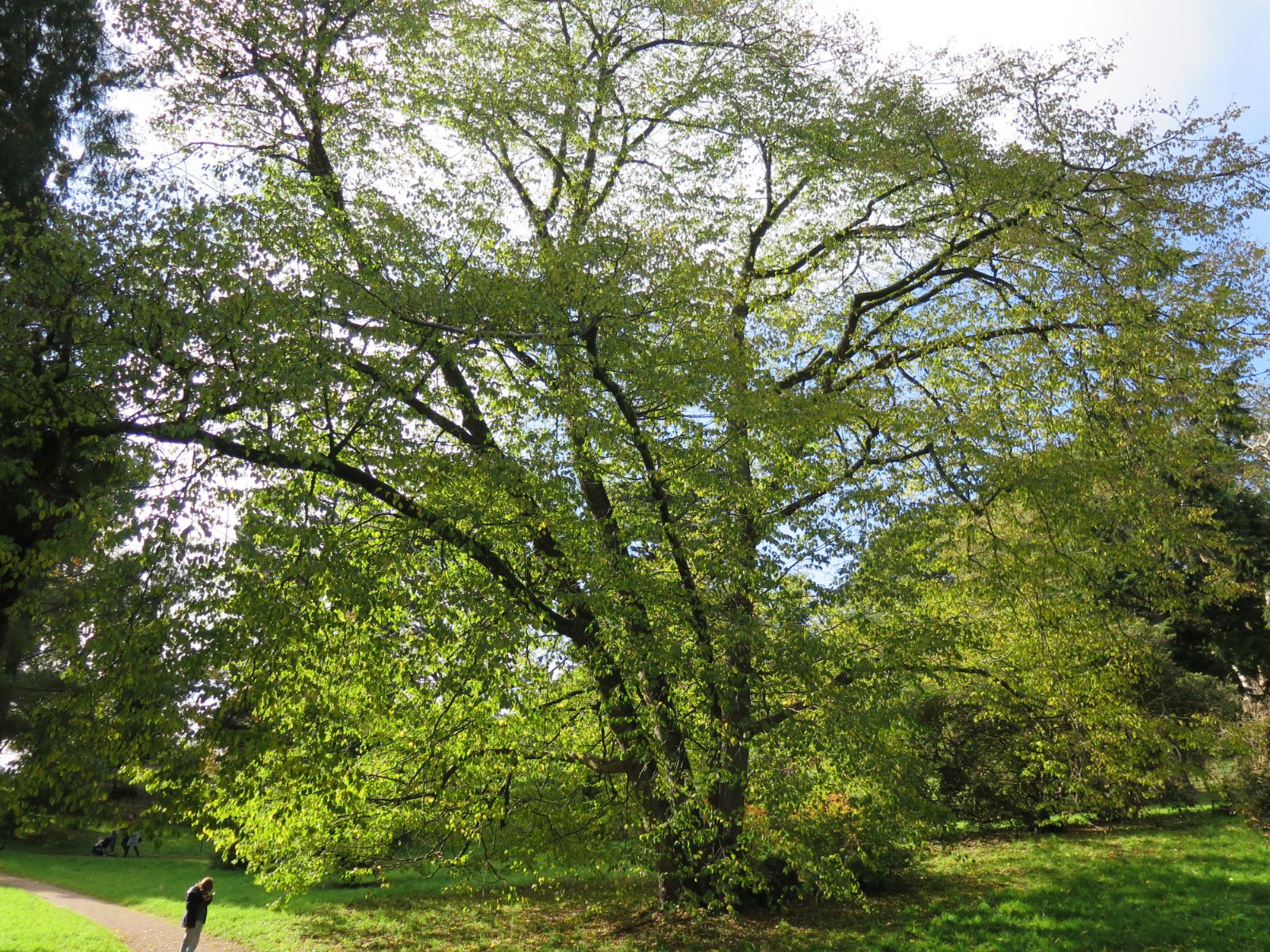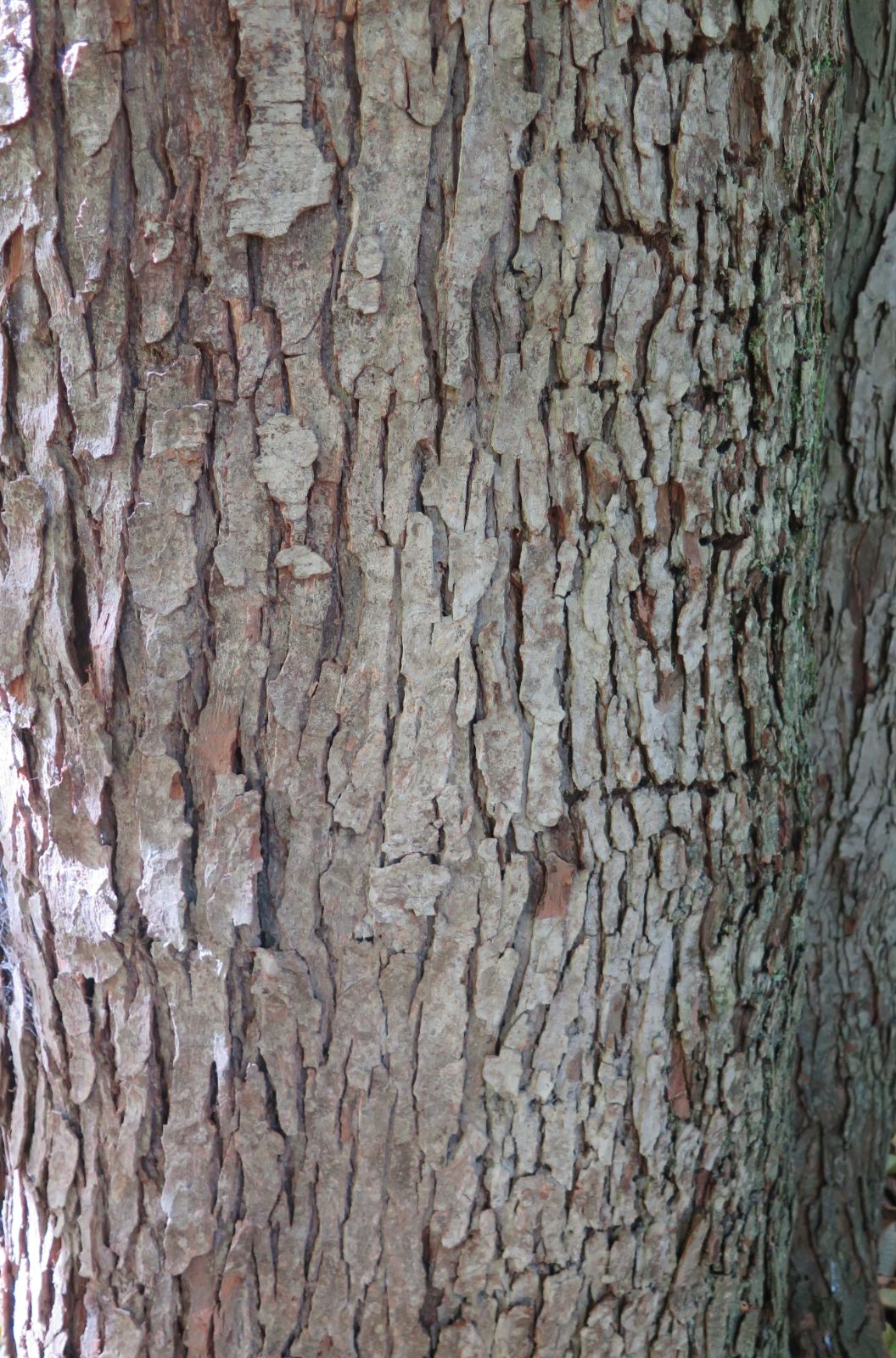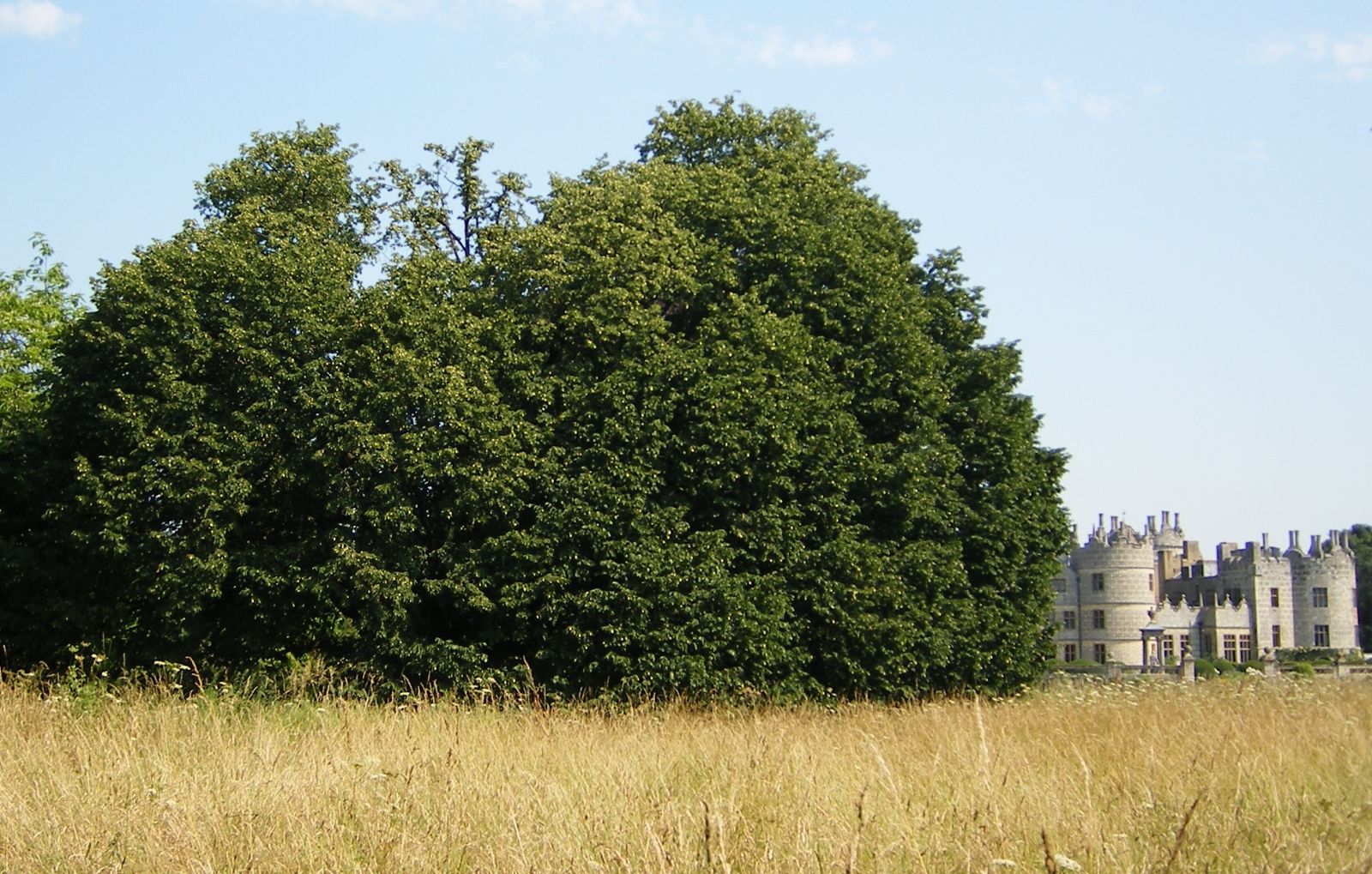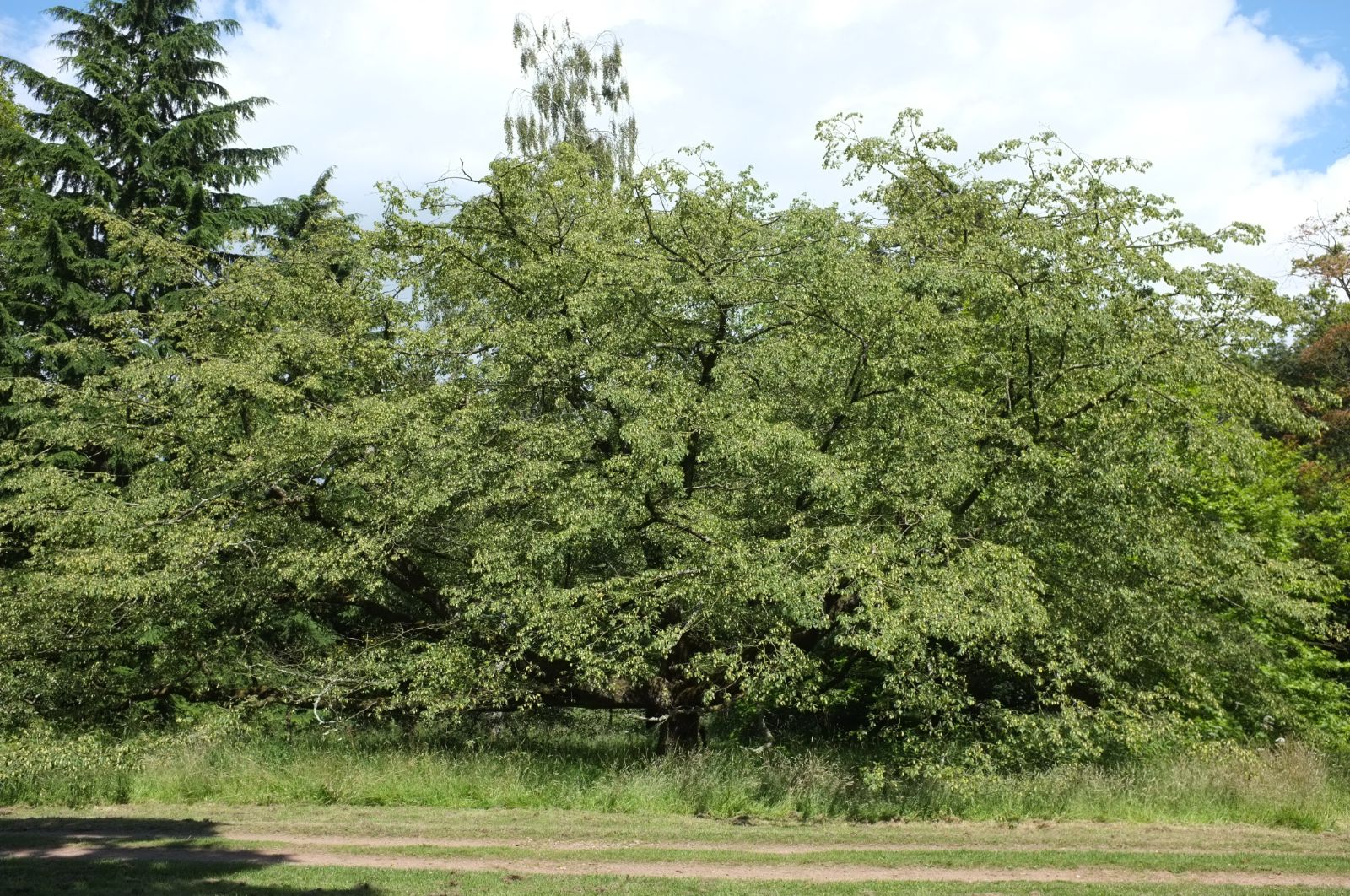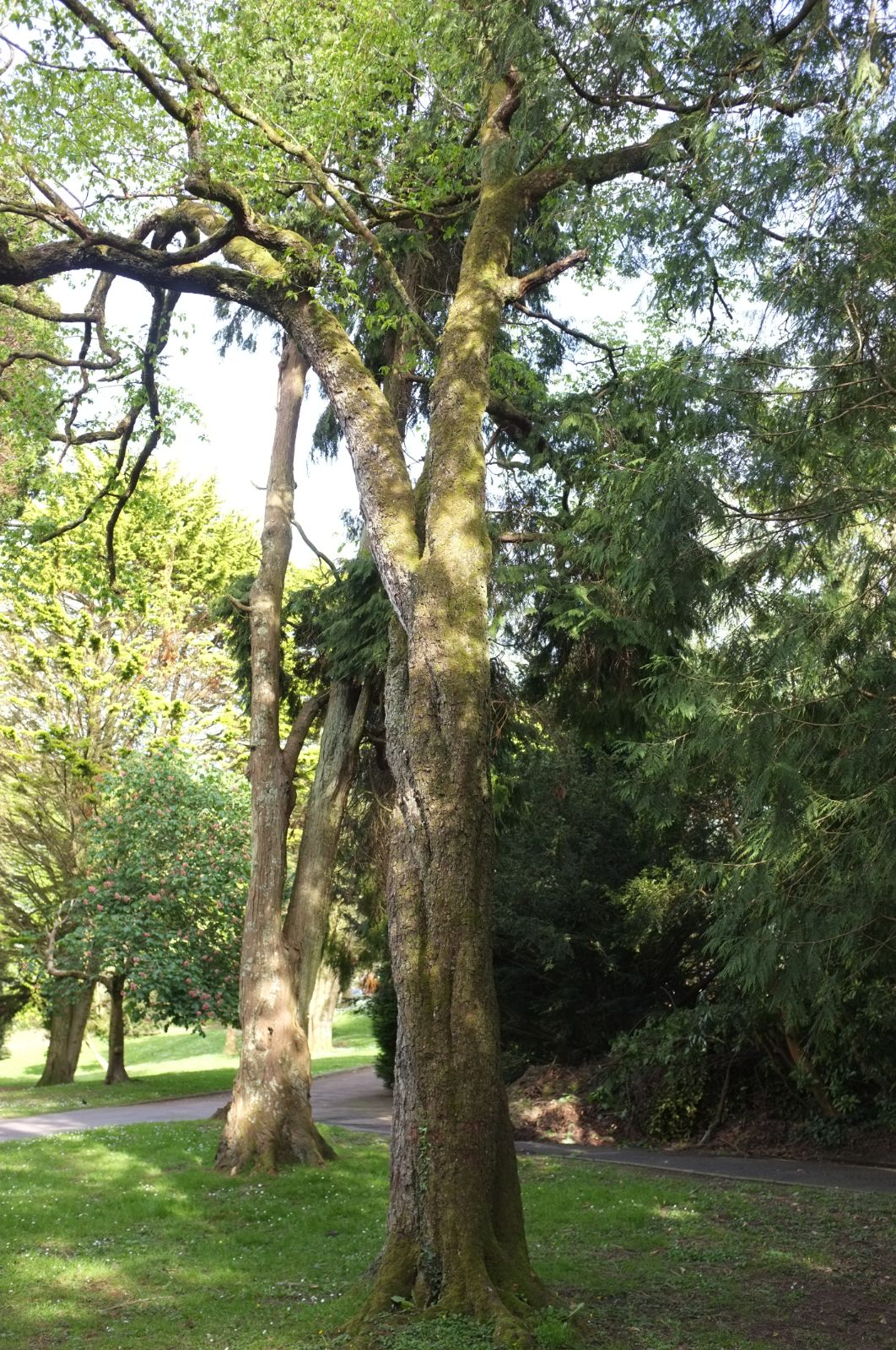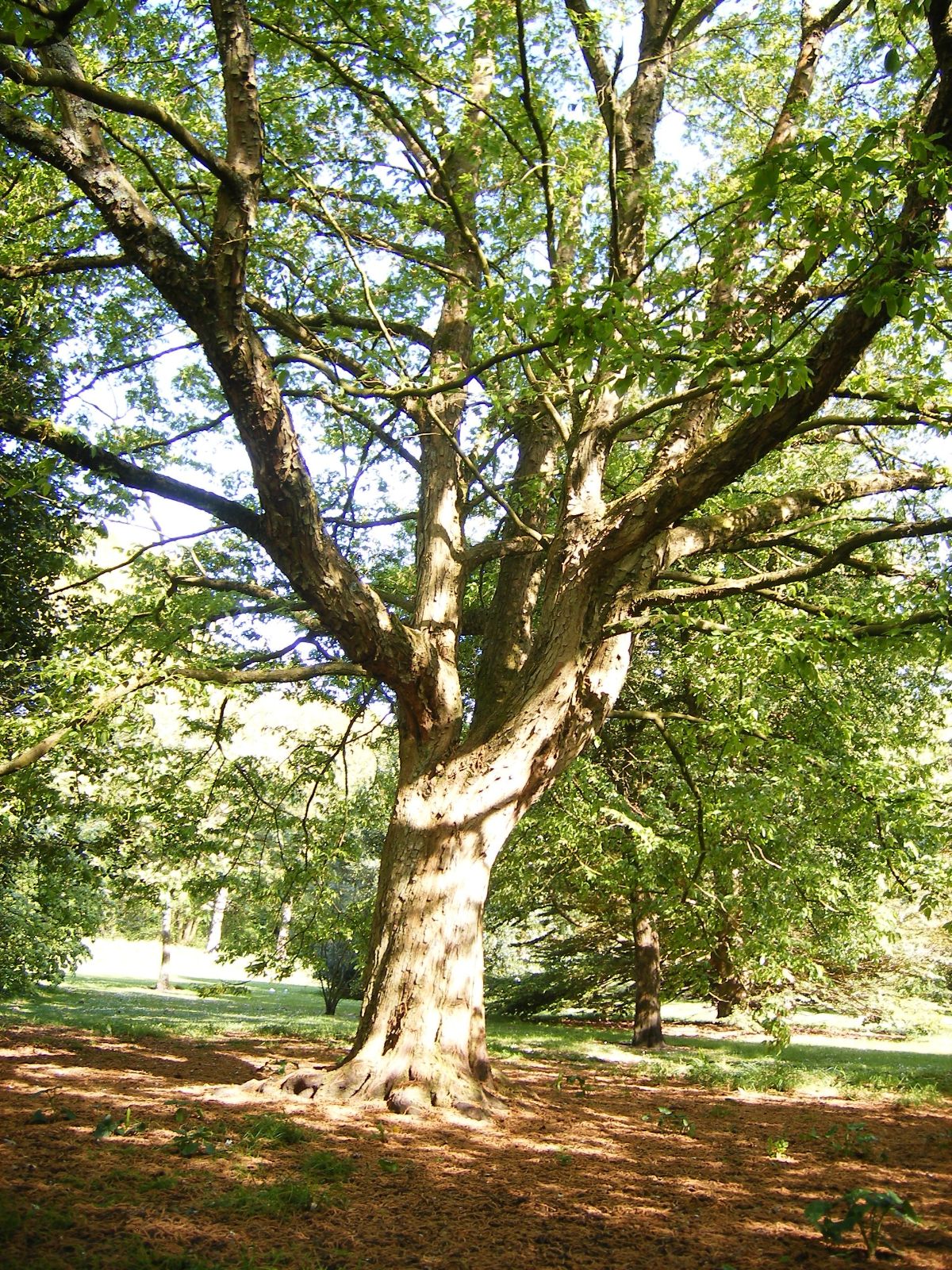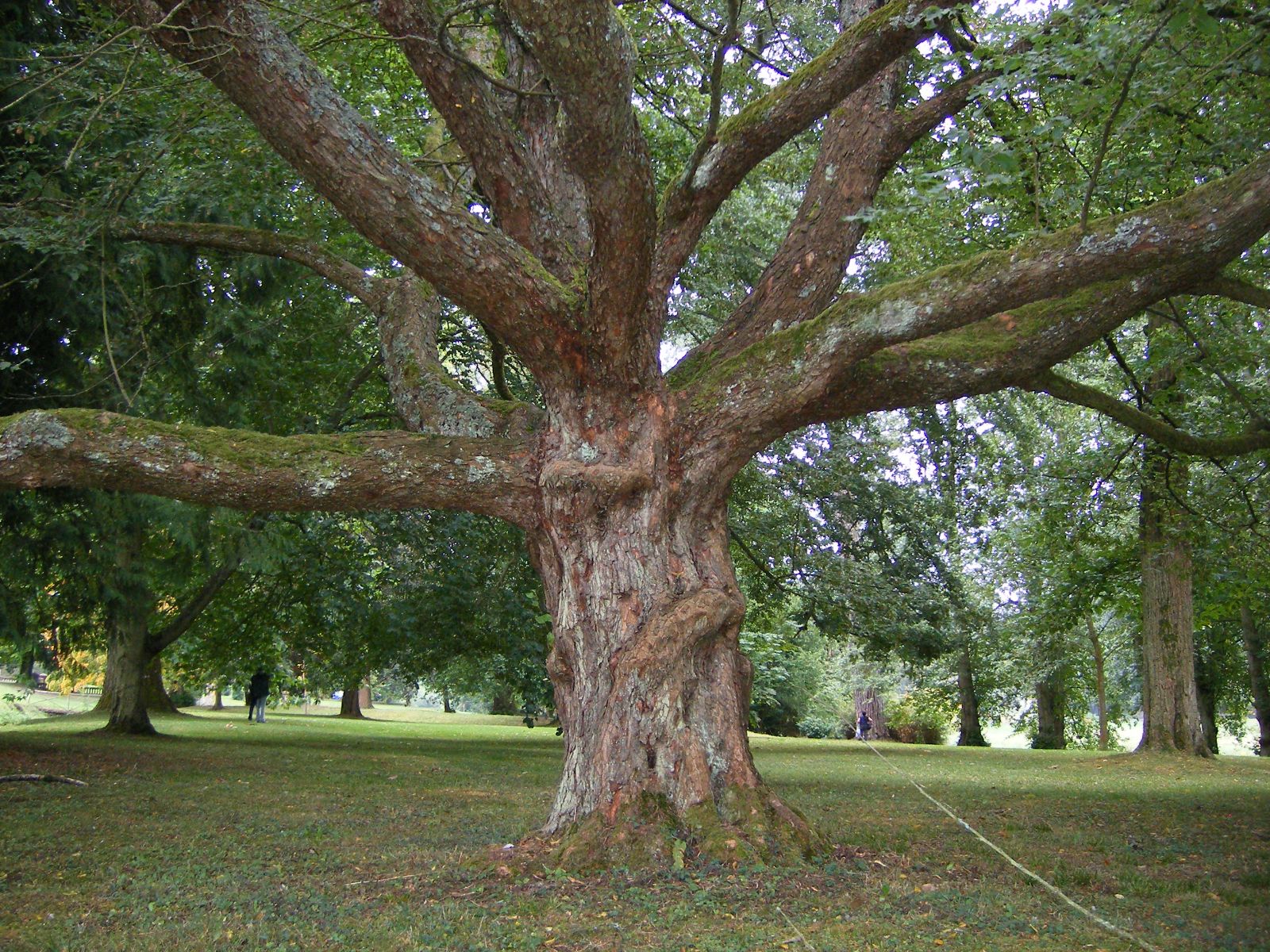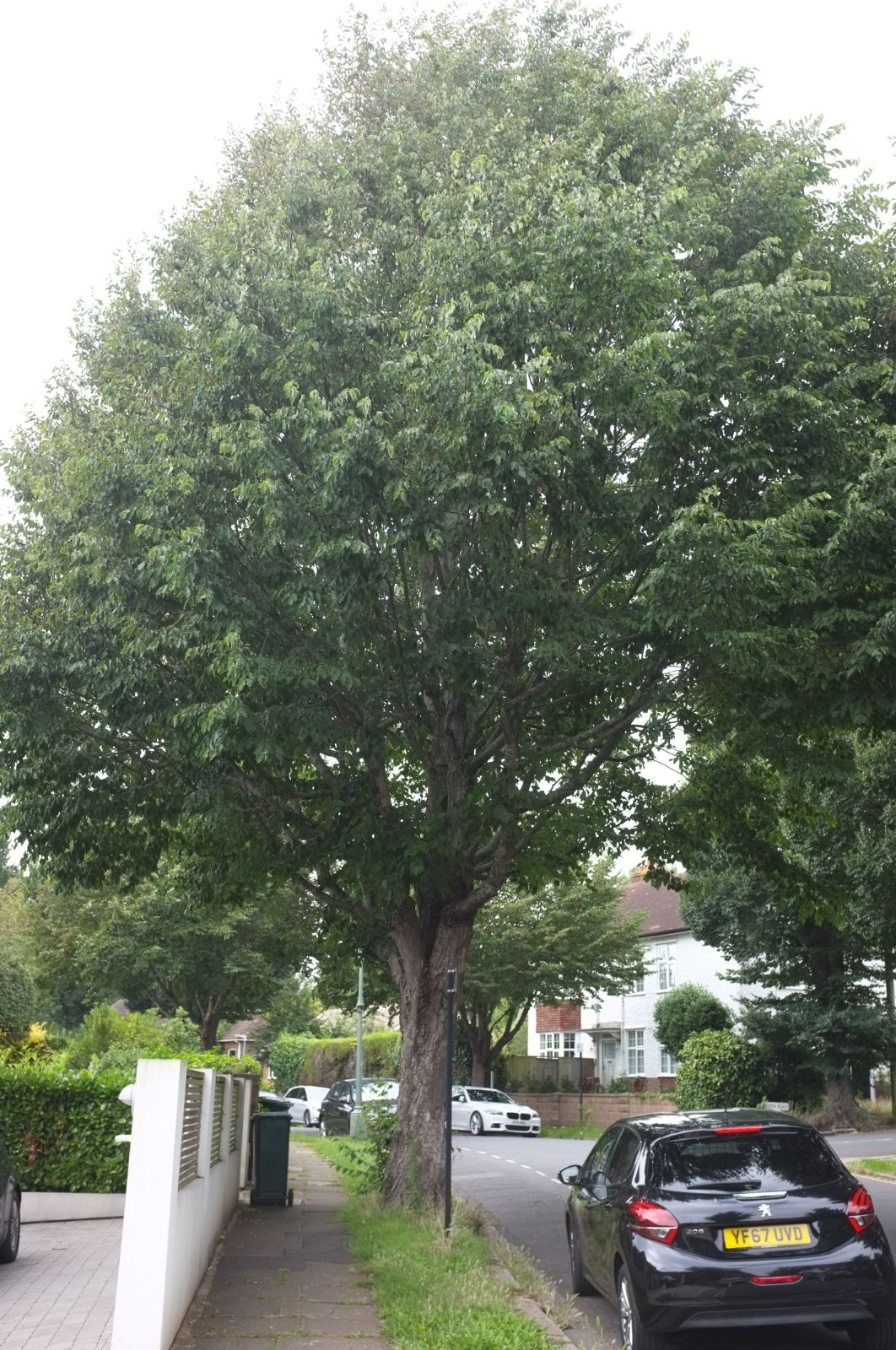Ostrya carpinifolia
Sponsor
Kindly sponsored by
Claire Mansel Lewis
Credits
Owen Johnson (2022)
Recommended citation
Johnson, O. (2022), 'Ostrya carpinifolia' from the website Trees and Shrubs Online (treesandshrubsonline.
Genus
Common Names
- European Hop-hornbeam
Synonyms
- Ostrya vulgaris Willd.
- Carpinus ostrya L., in part
- Ostrya italica P. Micheli ex Spach
- Ostrya ladelcii Sanguin.
Infraspecifics
A tree to c. 20 m tall; branches rather slender, spreading; bole becoming fluted. Bark grey-brown, soon cracking into shallow elongated scales and ultimately rugged. Twigs grey-brown, slender, short-pubescent (the hairs not gland-tipped). Leaves ovate, 7–10 × 3–5 cm, base rounded, apex pointed; dark rather matt green above with appressed hairs mostly between the veins, sparsely hairy beneath with axillary tufts; lateral veins in 12–15 pairs; margin neatly and closely double-toothed; petiole short (c. 6 mm long), pubescent (the hairs not gland-tipped). Male catkins 5–10 cm long, in 2s or 3s. Fruiting catkin 4–5 cm long; bladders c. 12 mm long, stalkless and crowded; nutlet c. 4 mm long. (Bean 1976; Rushforth 1986).
Distribution Albania Austria Azerbaijan Bosnia and Herzegovina Bulgaria Croatia France S of the Alps and in Corsica Georgia Greece Hungary In the far south of the country but perhaps extinct here Italy Including Sicily and Sardinia Lebanon North Macedonia Montenegro Russia In the Caucasus and adjacent regions Serbia Slovenia Switzerland Syria Turkey
Habitat A pioneer species on open sunny sites in the north of its range; in moist woodlands in the south; often on poor, rocky soils.
USDA Hardiness Zone 4
RHS Hardiness Rating H6
Conservation status Least concern (LC)
Although far from scarce as a wild tree in the south and east of Europe, Ostrya carpinifolia may not have made an appearance in English gardens until 1724, when it was listed in the catalogue of Kensington nurseryman Robert Furber (Johnson 2015). By this time the New World O. virginiana had already been here for a generation – an abnormal priority reflected much later by John Briquet’s rarely-encountered 1910 synonym for the European tree, O. virginiana subsp. carpinifolia. Since the 18th century the two species’ fortunes in cultivation in northern Europe have been reversed: O. carpinifolia is now widely available, including at large standard size for municipal use, while O. virginiana is a rare collector’s tree.
The two species are very similar: Ostrya carpinifolia has slightly longer leaves with more side-veins, and the hairs on the foliage of O. virginiana, under a microscope, are usually tipped with glands, like tiny drum-sticks. The European tree’s bark tends to crack into coarser, broader scales. In leaf, both are likely to be mistaken for the European hornbeam Carpinus betulus; on a good soil O. carpinifolia grows rather faster than the hornbeam but is unlikely to be so long-lived. A specimen at Langley Hall in Norfolk, grafted on hornbeam, had a trunk 152 cm thick about the graft in 1908, but only 78 cm below it (Elwes & Henry 1906–1913). This has long gone, but one tree in the collection at Kew, obtained from the Zöschen Nurseries in Germany in 1911, is also grafted at the base on hornbeam (Tree Register 2022). The fruit, when present, is an immediate give-away, and can make the species conspicuous from a distance. At Colesbourne Park, Gloucestershire, a specimen planted H.J. Elwes on the now inaccessible east bank of the lake is only visible when in fruit and John Grimshaw (pers. comm. 2022) recalls one year when a prolific fruit crop covered the lake with the floating bladder-like fruit, which sailed about on the breeze.
In 2006, the UK champion, on a private estate near Salisbury on a rich, deep, alkaline soil, had a spread of 23 m, with the central branches decaying and the outermost ones sweeping the ground, and a short bole 108 cm thick at 70 cm; the tallest, 24 m in 2013, is a tree near the Chapel at Killerton in Devon, on a fertile acid soil, which uncharacteristically forks into five major trunks from the base. These figures compare well with the maximum sizes recorded in the wild; Ostrya carpinifolia is certainly a willing and adaptable tree in cultivation. One of the best, 17 m × 69 cm dbh in 2014, grows in very Atlantic conditions in Kimberley Park, a public park in Falmouth, Cornwall; another in Musgrave Park, Belfast, was 12 m × 53 cm dbh in 2007. The Palace of Holyroodhouse in Edinburgh had a very big example, 18.5 m × 83 cm dbh, in 2005, while in 1980 there was a specimen of 13 m × 46 cm as far north as Crichie House in Aberdeenshire (Tree Register 2022). A 1964 planting at Stanmer Park outside Brighton, 16 m × 56 cm dbh in 2021, grows on the most alkaline and reactive of shallow chalk soils; a splendid example at Bute Park in Cardiff, 15 m × 68 cm in 2013, was planted after 1947 during the first stage of the development of the public arboretum here (Tree Register 2022). There are a few semi-mature street trees in London, the largest probably being one of 12 m × 44 cm dbh in 2018 in Pauntley Street, Upper Holloway, although as this is characteristically a very spreading species it can be difficult to fit into an urban environment. A mature standard planted in St Nicholas Street in Ipswich grew quickly, but had been removed by 2016 (Tree Register 2022).
In its native habitat Ostrya carpinifolia is sometimes coppiced for its heavy timber, which makes an excellent firewood, or is else pollarded (Pasta, de Rigo & Caudullo 2016). Regular pollarding allows specimens to reach considerable ages, such as a tree at Anatella in Italy with a burry trunk 134 cm thick, and another with a very hollow bole open on one side, at Carpinete Romano in the same country (monumentaltrees.com 2022). Extensive die-back has been observed in recent years in northern Italy and western Slovenia when increasingly intense droughts combine with attack from the fungus Botryosphaeria dothidea (Pasta, de Rigo & Caudullo 2016).
In cultivation further north, there are few specimens with a known provenance. The population at Kew includes a ten-metre tree from TURX 89, collected in Turkey in 1993 (Tree Register 2022); the Royal Botanic Garden Edinburgh has trees from Italy and Greece, while an Italian collection has grown successfully at the Linnaeus Garden of Uppsala University in southern Sweden since 2002 (Royal Botanic Garden Edinburgh 2022).
In the eastern United States, Ostrya carpinifolia has failed to compete in cultivation with the genus’ native representative in the way that Carpinus betulus has done thanks to its sometimes attractive cultivars. The New York Botanical Garden has a European hop-hornbeam wild-collected in the Caucasus (Royal Botanic Garden Edinburgh 2022), but another at the J.C. Raulston Arboretum in the hotter summers of North Carolina remains disappointingly shrubby (Dirr 2009).
'F.C. Moree'
A tree with a good central stem and branches ascending at 30–45°, suitable for avenues and street planting. It was selected as a seedling at Randwijk in the Netherlands in 2000 and was named after a president of the Opheusden Tree Growers’ Association, Frans Moree (Udenhout Trees 2022). This clone is erroneously listed by Lawrence Hatch (Hatch 2021–2022) as a cultivar of Ostrya virginiana.
'Marja Findling'
Synonyms / alternative names
Ostrya carpinifolia 'Marja's Findling'
A semi-dwarf, flat-topped sport which has become quite popular in Europe since 2017 (Hatch 2021–2022).

